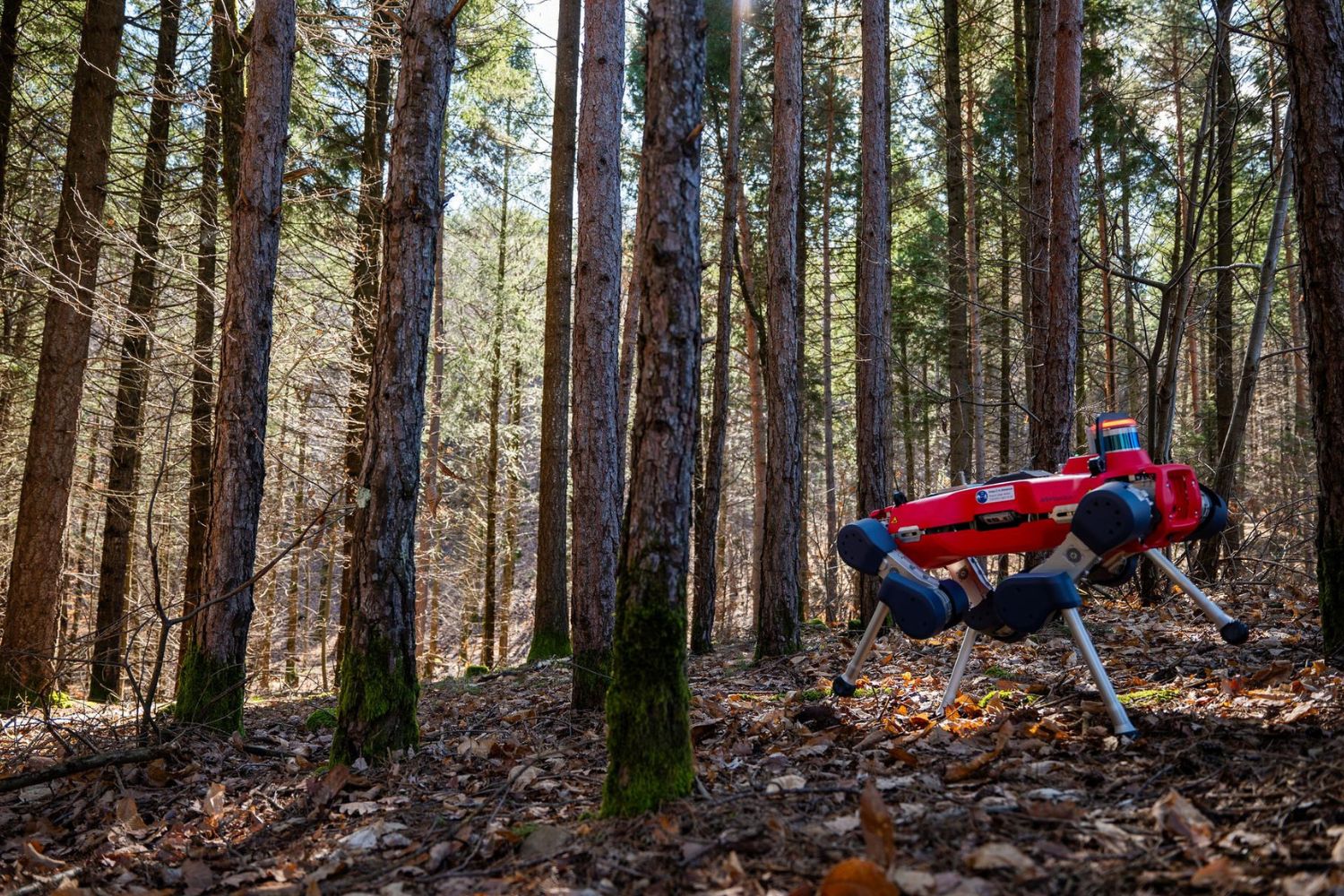A new international project led by the Free University of Bolzano uses drones, zoomorphic robots and artificial intelligence to collect crucial data on the health of forests and their role in the fight against climate change

@Matteo-Vegetti
Forests are among the most powerful natural tools in the fight against climate change, absorbing around 30% of global CO₂ emissions each year. But large-scale forest monitoring remains a complex challenge, mainly due to the vast size of wooded areas and the logistical difficulties involved in tracking them.
That’s why a research team from the Free University of Bozen-Bolzano (unibz) is taking a radically new approach: they’re using cutting-edge technologies like drones, animal-like robots, and artificial intelligence to monitor forests from a never-before-seen perspective. The goal? To gather detailed data and improve sustainable forest management.
We need an innovative and multidisciplinary approach to tackle today’s environmental challenges
That’s how Professor Enrico Tomelleri of unibz sums up the team’s mission. The idea is straightforward: use technology to better understand forests and support smarter, more sustainable management strategies.
Three projects, one mission
At the heart of this revolution are three major initiatives: Digiforest, INEST, and Forma. Each project brings advanced technology straight into the natural world.
- Digiforest: Funded by the EU’s Horizon Innovation Actions, Digiforest is backed by a multi-million euro budget (tens of millions of dollars). Its goal is to develop autonomous robots that can collect 3D data on trees. With LiDAR technology, researchers can create highly accurate digital models of forests. These models help both field operators and policymakers make better decisions and use forest resources more efficiently. Field tests are expected to begin in the coming months.
- Inest: Part of Italy’s National Recovery and Resilience Plan (PNRR), INEST focuses on setting up experimental areas to test new forest monitoring technologies and algorithms. The project is deeply rooted in applied research and technology transfer, aiming to strengthen collaboration between universities, businesses, and institutions.
- Forma: Set to launch in 2025, Forma takes things a step further by using drones and zoomorphic robots to keep forest inventories constantly updated. These tools can deliver real-time data on forest health, helping identify zones at risk of wildfires, infestations, or environmental degradation.
How technology is transforming forest management
All three projects share a common technological backbone: LiDAR, which uses laser pulses to generate ultra-detailed 3D maps. This technology makes it possible to digitally reconstruct forest environments with remarkable precision, including tree height, vegetation density, and terrain structure.
The collected data is then processed by artificial intelligence algorithms, which generate predictive models of forest development and their carbon-absorbing capacity.
Towards a digital ecology
In the coming months, field tests will reveal just how effective these tools are. But one thing is clear: digital forest monitoring could be a game-changer for environmental sustainability.
With backing from international institutions like the Technical University of Munich, the University of Oxford, and the Swiss Federal Institute of Technology in Zurich, this effort has global ambitions. It could soon become a model for other countries seeking to combine technology and nature in the fight against climate change.
Thanks to a combination of robots, drones, and intelligent algorithms, unibz is paving the way for a future where technology is not nature’s enemy—but one of its greatest allies. If these predictions hold true, the next decade could see forests more monitored, protected, and valued than ever before.
